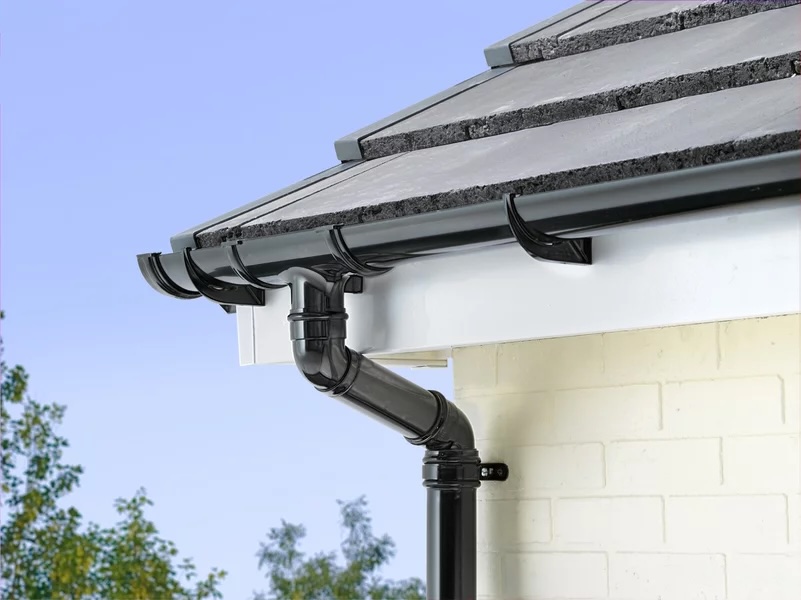10 Things Competitors Learn About Downspouts
Understanding Gutter Downspouts: Importance, Types, and Maintenance
Gutter downspouts are important elements of any roofing system, playing a crucial role in handling rainwater and protecting residential and commercial buildings from water damage. This article will look into the value of gutter downspouts, the different types available, and essential maintenance ideas to guarantee they work efficiently.
The Importance of Gutter Downspouts
Gutter downspouts are vertical pipes that direct rainwater gathered by gutters away from the foundation of a building. These systems assist avoid a plethora of problems, consisting of:
- Foundation Erosion: Without proper drainage, water can pool around the structure of a building, leading to soil disintegration and possible structural damage.
- Basement Flooding: Excess water can leak into basements, triggering flooding that might result in expensive repairs and a conducive environment for mold growth.
- Landscape Damage: Inefficient drainage can result in soil erosion in gardens and yards, adversely affecting plant health and landscaping stability.
- Wall and Roof Damage: Improperly routed rainwater can damage siding, roof products, and lead to wood rot, which further adds to structural degeneration.
Due to these considerable functions, house owners and property managers need to pay attention to gutter downspout style and maintenance.
Kinds Of Gutter Downspouts
There are numerous types of gutter downspouts offered, each serving particular functions based on the architecture of the structure and the volume of water overflow.
1. Standard Downspouts
The most common type, standard downspouts, are normally rectangle-shaped or round and are linked straight to the gutter system. These are usually made from:
- Aluminum: Lightweight and resistant to rust.
- Vinyl: Affordable and easy to install, though less long lasting than metal alternatives.
- Steel: Very durable however can rust without a protective finish.
2. Leader Pipes
Leader pipelines are typically used in conjunction with basic downspouts to redirect water away from developing structures in locations with heavy rainfall. They're usually bigger than basic downspouts and designed for high-capacity drainage.
3. Extensions and Diverters
Extensions and diverters are additional parts used with downspouts to control the direction of the water flow. They can direct water even more away from the structure or into rain barrels for harvesting, decreasing waste.
4. Crushed Stone Drainage Systems
These systems incorporate crushed stone to assist disperse water more evenly throughout areas of landscaping, minimizing erosion and enabling the ground to take in more rainwater.
5. Rain Barrels
Rain barrels are often linked to downspouts, allowing homeowners to gather and save rainwater for later use in irrigation, helping save water and reduce energy costs.
| Type | Description | Typical Materials |
|---|---|---|
| Basic | Most common, direct water from gutters. | Aluminum, Vinyl, Steel |
| Leader Pipes | High-capacity systems for heavy rainfall. | Varies (metal/plastic) |
| Extensions | Modifies direction of water stream away from structure. | Plastic, Metal |
| Crushed Stone | Diffuses water throughout landscaped areas. | Crushed Stone, Gravel |
| Rain Barrels | Collects runoff for irrigation and water conservation. | PVC, Plastic, Wood |
Keeping Gutter Downspouts
Routine maintenance of gutter downspouts is important to prevent blockages and make sure that water is directed away from the building efficiently. Here are some important suggestions:
1. Regular Cleaning
Debris such as leaves, branches, and dirt can collect in downspouts, causing obstructions. It is recommended to:
- Clean a minimum of twice a year: Once in spring and as soon as in fall.
- Utilize a garden trowel: RepairMyWindowsAndDoors Remove large debris lodged in the downspout.
- Utilize a plumbing snake: For relentless clogs, a snake can help dislodge any built up material.
2. Check for Damage
- Check for rust: Metal downspouts need to be inspected for signs of deterioration.
- Look for bends or kinks: Ensure that the downspout is straight to permit for proper drainage.
- Take a look at joints and seals: Cracks or loose fittings may require sealing or replacement.
3. Ensure Proper Alignment
Downspouts ought to be positioned to enable gravity-assisted drainage:
- Use a level: Ensure they slope far from the structure at a slight angle.
- Adjust extensions: If they divert water towards the structure instead of away from it.
4. Think About Seasonal Preparation
In regions with freezing temperatures, house owners should:

- Winterize downspouts: Clear any water or ice to prevent freezing and subsequent damage.
- Set up heated cable televisions: These can avoid ice dams in chillier environments.
FAQs about Gutter Downspouts
Q1: How often should I clean my gutter downspouts?
A1: It is advised to clean your gutter downspouts at least twice a year, preferably in spring and fall, but more frequently if your home is surrounded by trees.
Q2: What can I do if my downspouts are clogged?
A2: You can eliminate particles manually with a trowel or utilize a plumbing snake to clear obstructions. If the issue continues, consider employing a professional service.
Q3: Is it needed to install extensions on downspouts?
A3: Extensions are helpful as they assist direct water even more far from the structure, reducing the risk of erosion and damage.
Q4: Can I install gutter downspouts myself?
A4: Yes, lots of house owners can set up gutter downspouts utilizing readily available products and tools; nevertheless, if you're not sure, hiring a professional may ensure compliance with local building regulations.
Q5: How do I know if my gutter downspouts are working properly?
A5: Observe the water circulation throughout and after rains; if water is pooling around the structure or supporting in the gutters, it might show an issue with the downspouts.
Gutter downspouts are crucial in a thorough drainage system, safeguarding buildings from prospective disasters triggered by water damage. Understanding the kinds of downspouts available and their maintenance needs can boost their effectiveness and longevity. Routine inspections and appropriate care will ensure that these components perform their essential functions, safeguarding both the structure and surrounding landscape effectively.

